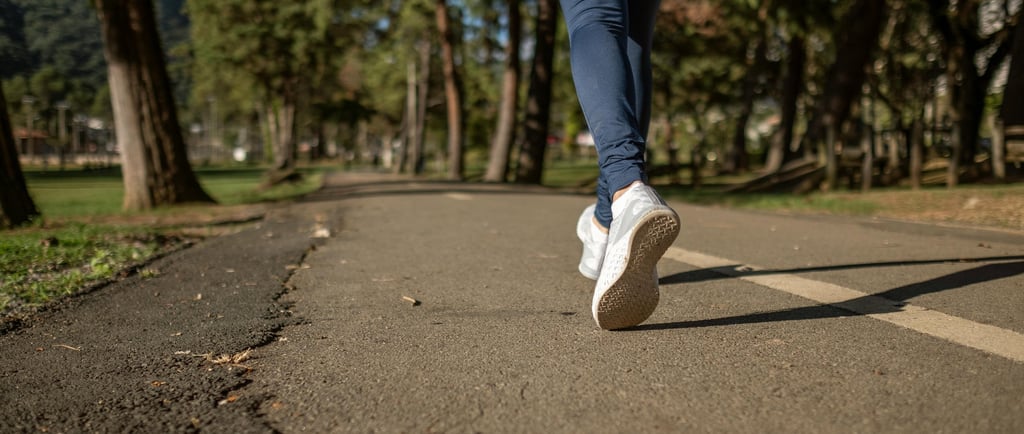Every Step Matters: A Stoic and Scientific Reflection on Movement and Mortality
"If a man knows not to which port he sails, no wind is favourable." Seneca
Dr. Colin Robertson
7/29/20253 min read


Framed against the stoic discipline of daily commitment and tempered self-awareness, the rhythm of walking carries profound biological consequences. The 2025 article published in The Lancet Public Health, entitled Daily Steps and Health Outcomes in Adults (Ding et al.), elevates our understanding of walking from a mundane task to a modifiable determinant of disease risk. This review weaves its findings into the broader corpus of peer-reviewed literature on physical activity, chronic disease prevention, and functional aging, advocating for practical behavioural shifts rooted in clarity and simplicity.
A Dose-Responsive Dialogue Between Steps and Health
The systematic review by Ding et al. offers a compelling case for step-based health targets. Synthesising data from over 35 cohorts and nearly 60 studies, they confirm inverse relationships between step count and outcomes like all-cause mortality, cardiovascular disease, dementia, type 2 diabetes, depressive symptoms, and cancer mortality. Risk reductions as high as 47% were observed at a modest threshold of 7000 steps per day, a stark contrast to the legacy benchmark of 10,000 steps. These findings mirror similar outcomes reported by Paluch et al. (2022) and Banach et al. (2023), who found non-linear but significant mortality benefits with step volumes exceeding 4000 steps per day.
Steps as a Proxy for Whole-Person Resilience
Beyond their mechanical representation, steps are a proxy for physical competence, autonomy, and social engagement, all tightly linked to health-span. Ding et al.'s analysis found improvements not only in metabolic markers but also in fall risk and depressive symptoms. These findings extend those of Kraus et al. (2019), who emphasised steps as a scalable measure for population-wide surveillance. Importantly, studies by Tudor-Locke et al. (2023) and Jefferis et al. (2019) show that step accumulation patterns, including intensity and cadence, may further stratify risk and functionality, especially in older adults.
Modern Tools, Timeless Truths
In the ancient world, wisdom walked. In our modern one, wearables walk with us. Advances in accelerometry and data integration enable a nuanced understanding of cadence, intensity, and frequency. The meta-analysis includes data from wrist- and hip-worn trackers, showing consistent trends across device types. The message is consistent: 'Some is better than none, more is better than some.' This mirrors the WHO 2020 recommendations and the U.S. Physical Activity Guidelines (2018), now increasingly aligned around device-measured behaviour.
Contextualising the 7000-Step Threshold
While 10,000 steps have endured as a convenient heuristic, evidence shows that 7000 daily steps may be a more attainable and still highly effective threshold for the majority. The review shows diminishing returns beyond 7000 – 8000 steps for many outcomes, particularly in older adults or individuals with comorbidities. This echoes the principle of arete, excellence within one’s own capacity. Practically, it means aiming for meaningful and manageable physical thresholds rather than perfection. Incremental progress, the stoic’s ally, reigns.
Applied Takeaways: Precision in Simplicity
• Walk with purpose: 4000 – 7000 daily steps confer significant reductions in risk for most major outcomes.
• Embrace consistency: Daily movement is more impactful than sporadic intensity.
• Personalise the goal: Younger and fitter individuals may benefit from aiming beyond 10,000 steps, while older or clinical populations should focus on regular movement.
• Use technology to anchor behaviour: Devices are not distractions, but mirrors of mobility.
• Think beyond mortality: Mental health, cognition, and balance are all steps-sensitive systems.
Conclusion
This research synthesis highlights the transformational impact of walking, not merely as exercise but as a deeply embodied habit of health. The stoics urged us to begin each day in alignment with nature, and there are few acts more natural, more life-extending, than walking. In the face of modern sedentarism, walking is both remedy and ritual. As the science affirms, the path to longevity is indeed paved one step at a time.
References
Ding D, et al. (2025). Daily steps and health outcomes in adults: a systematic review and dose-response meta-analysis. Lancet Public Health, https://doi.org/10.1016/S2468-2667(25)00164-1
Paluch AE, et al. (2022). Daily steps and all-cause mortality: a meta-analysis of 15 international cohorts. Lancet Public Health, 7(3), e219–e228.
Banach M, et al. (2023). The association between daily step count and all-cause and cardiovascular mortality: a meta-analysis. Eur J Prev Cardiol, 30(16), 1975–85.
Kraus WE, et al. (2019). Daily step counts for measuring physical activity exposure and its relation to health. Med Sci Sports Exerc, 51(6), 1206–12.
Jefferis BJ, et al. (2019). Physical activity and all-cause mortality in older men: does volume matter more than pattern? Br J Sports Med, 53(16), 1013–20.
Tudor-Locke C, et al. (2023). Walking cadence and health: From guideline concept to practice. Br J Sports Med, 57(10), 1227–1232.